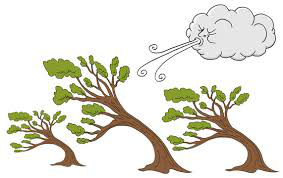 August 2024
August 2024
Urban life is hard on plants which have to deal with pollution, lack of sun and limited room to grow.
Survival in the urban desert of a high-rise building requires selecting the right species, placing in the proper location and providing the necessary care.
That rooftop location or courtyard may be a great common space. To a plant it can be like a mountain top or desert subject to high winds and insufficient water. Rooftops can be colder than ground level and much hotter when the sun is shining. Soil can get too hot, cool, dry or wet.
 Irrigation is important. Is there protection from the weather? Plants that are resistant to drought, able to withstand hot and dry summers, and cold winters are more likely to thrive.
Irrigation is important. Is there protection from the weather? Plants that are resistant to drought, able to withstand hot and dry summers, and cold winters are more likely to thrive.
Climate change is causing more dramatic temperature changes dangerous to plants. Warmer temperatures allow pests and fungus to thrive and cause more damage.
For landscapers and gardeners, the logistics of transporting supplies, equipment and people to a rooftop can be a challenge. This ties up elevators and can require protection for floors and walls as everything is transported through a building. This can nearly double the time and cost of similar plantings at ground level.
Rooftop plants need to be hardier and fertilized more frequently. Smaller trees and those with smaller leaf surfaces work better. Trees with needles can better survive strong winds. Most plants don’t survive longer than about five years.
 Nature requires the assistance of gardeners and landscapers if it is to survive the harsher climate of urban condominium and high-rise buildings.
Nature requires the assistance of gardeners and landscapers if it is to survive the harsher climate of urban condominium and high-rise buildings.







